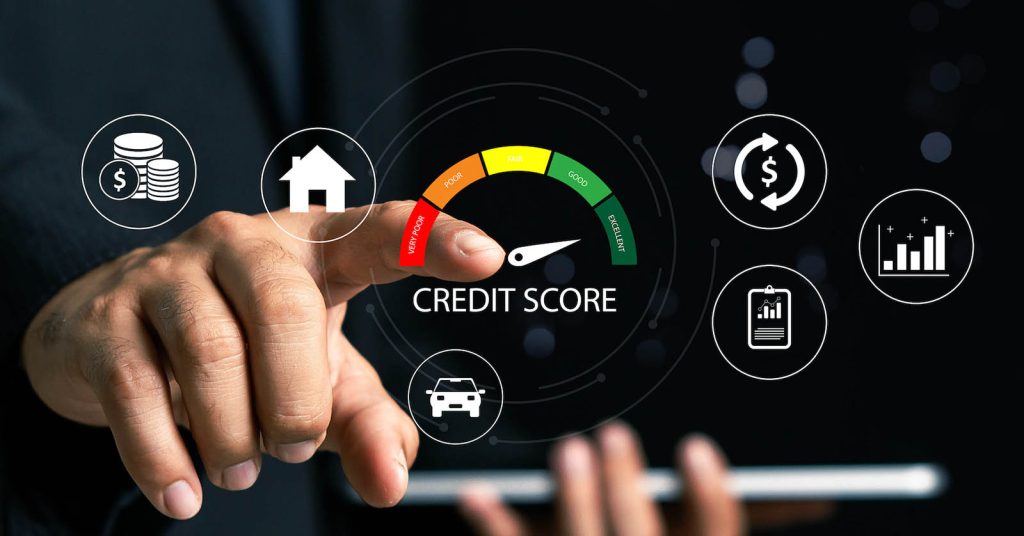Fast improvements are real — if you focus on the biggest scoring levers and how credit data actually updates. On the dominant FICO® 300–850 scale, the two heaviest factors are payment history (~35%) and amounts owed/credit utilization (~30%), which is why preventing new late payments and lowering revolving balances can move scores quickly. The fastest results usually come from a combination of (1) reducing reported credit card balances before the statement closes, (2) adding positive data that your reports might be missing (on-time rent, utilities via Boost), (3) cleaning up errors that suppress your score, and (4) using lender-driven tools like rapid rescore when you’re mid-mortgage. In 2025, there are two more realities to track: some Buy Now, Pay Later (BNPL) loans now appear on credit files (and collections from missed BNPL payments can still hurt), and regulators have taken steps around medical debt reporting, though court challenges have followed — so check the latest status when you read medical-debt advice. Below you’ll find a prioritized playbook, a quick-win table with realistic timelines, and an FAQ that separates speed myths from what actually updates your file. The goal: raise your score fast — without gimmicks — and lock in habits that keep it high after you get the improvement.
Key Takeaways
- Hit the big levers first: avoid new late payments (35% of FICO) and lower reported utilization (30%).
- Report the good stuff: add utilities via Experian Boost and consider a reputable rent-reporting service.
- Time your payments: pay cards before the statement date so a lower balance is reported.
- Shop smart: bunch mortgage/auto inquiries within ~45 days — FICO treats them as one for scoring.
- New in 2025: BNPL is more visible (Apple Pay Later on Experian; Affirm reports all pay-over-time since Apr 1, 2025). Collections still hurt.
Step 1 — Lower What Gets Reported (Utilization) Before the Statement Cuts
Most card issuers report your statement balance to the bureaus, not your balance today. That’s why paying down cards before the statement date (a “mid-cycle” payment) can show lower utilization on your next report and boost scores quickly. Start with high-APR cards and those with the highest utilization percentage; both overall utilization and per-card spikes can weigh on scores. If you already paid but the statement hasn’t cut, consider an extra small payment to drop under a threshold (for example, below ~30% of limit; lower is better if you’re aiming for a higher tier). If a large purchase pushed you over, break payments into a few smaller mid-cycle pushes rather than waiting for one big end-of-month payment. Also check for pending charges that might settle after you pay; leaving a small cushion helps keep utilization low when those post. If you’re within days of a mortgage application and balances haven’t updated yet, ask the loan officer about a rapid rescore after you pay down — your lender can submit proof to the bureaus to accelerate updates. Rapid rescoring doesn’t fix accurate negatives, but it can make paid-down balances (or corrected errors) count within days instead of weeks.
Step 2 — Prevent New Late Payments and Stabilize Autopay
One new 30-day late can undercut weeks of progress. Turn on autopay for at least the minimum on every account, then schedule a second, manual “principal” payment for the amount you actually want to pay down. If you’re juggling due dates, ask your card issuers to align them — most will, and it makes cash-flow planning easier. If you’re already past due, bring accounts current as your first move; the older a derogatory becomes (with consistent on-time payments after), the less it weighs on FICO scores. If a late mark truly resulted from a servicer error, dispute it with documentation. If it was your error but an anomaly, you can request a goodwill adjustment; it isn’t guaranteed, but some creditors will remove a one-off late for long-standing customers with clean histories. Avoid paying a third party to send generic letters — creditors respond best to specific, documented cases and good track records. Finally, never skip payments on installment loans to pay cards; a missed installment hurts payment history, while card utilization can be lowered next cycle with good timing.
Step 3 — Add Positive Data That’s Missing (Boost, Rent, and Authorized User)
Many files lack on-time payment data from bills you already pay. Experian Boost® can add eligible utilities and some recurring bills to your Experian file; it’s opt-in and free, and improvements (if any) can be visible quickly. For renters, a rent-reporting service that reports to one or more bureaus can establish or strengthen payment history; check fees and which bureaus are covered, and verify whether your lender’s scoring model considers rental data. Adding yourself as an authorized user on a well-managed, older card (low utilization, no lates) can help thicken a thin file; confirm the issuer reports AUs, and avoid cards with high balances or any delinquencies that could transfer negative signals. None of these tactics overrides the big two levers, but they can add points at the margin, especially if your file is thin or you’re just shy of the next tier. Remove yourself from any AU card that isn’t managed well — the balances and history can count against you.
Step 4 — Dispute Real Errors and Use “Rapid Rescore” When Timing Matters
Pull your three-bureau reports and compare tradelines line-by-line: balances, limits, statuses, and dates. Dispute only inaccuracies with documentation (statements, payment confirmations, payoff letters). If you’re mid-mortgage and need those corrections or paydowns reflected quickly, ask the lender about a rapid rescore. A rapid rescore is a lender-facilitated process with the bureaus to update verified changes (like lower balances, corrected limit, or an error fix) in days; it doesn’t remove accurate negatives, but it can make real improvements show up in time to lock a rate. Keep expectations grounded: rapid rescoring is done through the lender, not by consumers directly, and availability/fees vary by lender. As you rate-shop, remember that FICO treats multiple mortgage/auto inquiries within about a 45-day window as one inquiry for scoring, and inquiries generally matter for only the first 12 months in most FICO models — so bunch your applications to preserve points.
Step 5 — Mind 2025 Changes: BNPL Visibility and Medical-Debt Rules
In 2025, your file may include data that wasn’t visible a few years ago. Apple Pay Later transactions now appear on Experian credit files with a BNPL designation, and Affirm is reporting all pay-over-time products to Experian for loans issued on/after April 1, 2025. Many current scoring models still don’t fully count BNPL tradelines, but late BNPL payments that go to collections can hurt your credit like any other derogatory. On medical debt, the CFPB issued a final rule in January 2025 to remove medical bills from most credit reports and curb creditor use of medical information, but subsequent litigation has challenged aspects of the rule; implementation may evolve by state and over time. The practical move: if medical collections appear on your reports, check the most current federal guidance (or ask your lender) about whether they should still be there and how they’re used in underwriting, and pursue written disputes or validations where appropriate.
| Quick win | What to do | Typical timeline |
|---|---|---|
| Lower utilization fast | Make mid-cycle payments before statement cuts; aim for lower reported balances on highest-utilization cards first. | Next statement cycle (or days with lender rapid rescore). |
| Protect payment history | Turn on autopay (minimums), align due dates, bring any past-due to current, request goodwill only for true one-offs. | Immediate prevention; goodwill outcomes vary. |
| Add positive data | Opt into Experian Boost; consider rent-reporting that covers the bureaus your lender uses. | Often visible within weeks (or sooner with Boost). |
| Shop loans without extra score hit | Batch mortgage/auto inquiries within ~45 days; avoid scattered pulls outside the window. | During your shopping window; minor impact beyond 12 months. |
Frequently Asked Questions (FAQs)
What moves a FICO® score fastest?
Preventing new late payments and lowering revolving utilization — together ~65% of FICO weighting — usually drives the fastest gains. Mid-cycle payments before the statement date help utilization report lower.
Will a rapid rescore fix my credit?
No. A rapid rescore only accelerates the reporting of verified changes (like lower balances or corrected errors) through a lender; it won’t remove accurate negatives. It’s useful when a mortgage approval hinges on updated numbers now.
Is BNPL “invisible” to scores?
Not anymore. Apple Pay Later appears on Experian reports, and Affirm reports all pay-over-time loans issued on/after Apr 1, 2025. Even where scoring models ignore BNPL tradelines, collections from missed payments still hurt.
How do I minimize inquiry impact when rate-shopping?
Group mortgage/auto inquiries within ~45 days — FICO counts them as one for scoring. Most FICO models only consider inquiries from the past 12 months.
Do rent and utilities help?
They can. Experian Boost can add eligible utility/streaming bills to your Experian file, and rent-reporting services can add on-time rent to one or more bureaus. Check fees and bureau coverage.
Sources
- myFICO — What’s in your FICO® Score (factor weights)
- Experian — Credit utilization rate (reporting & impact)
- Experian — Rapid rescore overview
- Equifax — What is a rapid rescore?
- Experian — Boost (official page)
- Experian — How to choose a rent-reporting service
- Experian — Apple Pay Later now appears on credit reports
- Affirm — Reporting all pay-over-time to Experian (from Apr 1, 2025)
- CFPB — Final rule to remove medical bills (Jan 7, 2025)
- CFPB — Medical-debt final rule (PDF, 2025)









